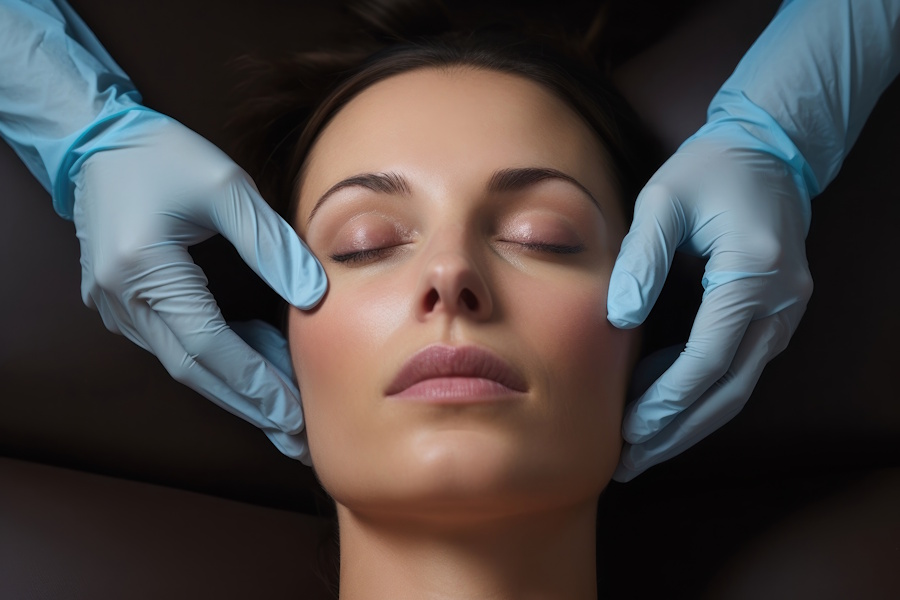
How does botox help with TMJ?
-
Elham Zarnegar
-
February 26, 2025
Temporomandibular joint (TMJ) disorder is a common condition that affects the jaw joint and surrounding muscles. It can cause pain, discomfort, and difficulty with jaw movement, making eating, speaking, and even sleeping difficult. While there are various treatment options available for TMJ, one that has gained popularity in recent years is the use of Botox injections. In this article, we will explore how Botox can help with TMJ and its benefits as a treatment option.
Understanding TMJ and Its Symptoms
Before we discuss how Botox can help with TMJ, let's first understand what TMJ is and its symptoms. The temporomandibular joint connects the jawbone to the skull and allows for jaw movement, such as chewing, speaking, and yawning. When this joint becomes inflamed or damaged, it can lead to TMJ disorder.
Some common symptoms of TMJ disorder include:
- Pain or tenderness in the jaw joint
- Difficulty opening or closing the mouth
- Clicking or popping sounds when opening or closing the mouth
- Headaches or earaches
- Difficulty chewing or biting
- Locking of the jaw joint
How Botox Can Help with TMJ
Botox, or botulinum toxin, is a neurotoxin commonly used for cosmetic purposes, such as reducing wrinkles and fine lines. However, it has also been found to be effective in treating various medical conditions, including TMJ disorder.
When injected into the muscles surrounding the jaw joint, Botox temporarily paralyzes them, preventing them from contracting and causing pain. This relaxation of the muscles can provide relief from the symptoms of TMJ disorder, such as pain and difficulty with jaw movement.
The Procedure
[gallery ids="39390"]
The procedure for using Botox for TMJ treatment is relatively simple and can be done in a doctor's office. The doctor will first identify the specific muscles causing the pain and discomfort. Then, they will use a small needle to inject Botox into these muscles.
The number of injections needed will depend on the severity of the TMJ disorder and the size of the muscles being treated. The entire procedure usually takes less than 30 minutes, and patients can resume their normal activities immediately after.
Results and Duration
The effects of Botox for TMJ treatment can be seen within a few days after the injections. Patients may experience a significant reduction in pain, discomfort and improved jaw movement. The results can last up to three months, after which the injections may need repeated for continued relief.
Benefits of Using Botox for TMJ
Botox has several benefits for TMJ treatment, making it a popular choice among patients and doctors. Some of these benefits include:
Non-Invasive Treatment Option
Unlike other treatment options for TMJ, such as surgery, Botox injections are noninvasive. This means there is no need for incisions or anesthesia and minimal risk of complications, making them a safer and more comfortable option for patients.
Quick and Convenient Procedure
As mentioned earlier, the procedure for using Botox for TMJ treatment is quick and can be done in a doctor's office. This makes it a convenient option for patients who may not have the time or resources for more invasive treatments.
Reduced Pain and Discomfort
One of the main benefits of using Botox for TMJ is the reduction of pain and discomfort. By paralyzing the muscles that are causing the pain, Botox can provide significant relief for patients. This can improve their quality of life and allow them to perform daily activities without discomfort.
Improved Jaw Movement
Another benefit of using Botox for TMJ is improving jaw movement. By relaxing the muscles, Botox can help patients open and close their mouths more easily, making it easier to eat, speak, and perform other activities that require jaw movement.
Minimal Side Effects
While all medical procedures carry some risk of side effects, Botox injections for TMJ have minimal side effects. Some patients may experience mild bruising or swelling at the injection site, but these usually subside within a few days.
Other Uses of Botox for TMJ
Aside from treating TMJ disorder, Botox has also been effective in treating other conditions related to the jaw and facial muscles. These include:
Bruxism
Bruxism is when a person grinds or clenches their teeth, often during sleep. This can lead to jaw pain, headaches, and tooth damage. Botox injections can help relax the muscles responsible for bruxism, reducing the frequency and intensity of teeth grinding.
Facial Asymmetry
Facial asymmetry is a condition in which one side of the face is noticeably different from the other. It can be caused by various factors, including TMJ disorder. Botox injections can help relax the muscles on one side of the face, creating a more symmetrical appearance.
Migraines
While the exact cause of migraines is still unknown, it is believed that muscle tension in the face and neck can contribute to their occurrence. Botox injections can help relax these muscles, reducing the frequency and intensity of migraines.
Conclusion
Botox has become a popular treatment option for TMJ disorder due to its effectiveness and minimal side effects. By temporarily paralyzing the muscles responsible for pain and discomfort, Botox can provide significant relief for patients. It is a non-invasive, quick, and convenient procedure that improves jaw movement and reduces pain and discomfort. If you are suffering from TMJ disorder, consider talking to your doctor about the possibility of using Botox as a treatment option.
